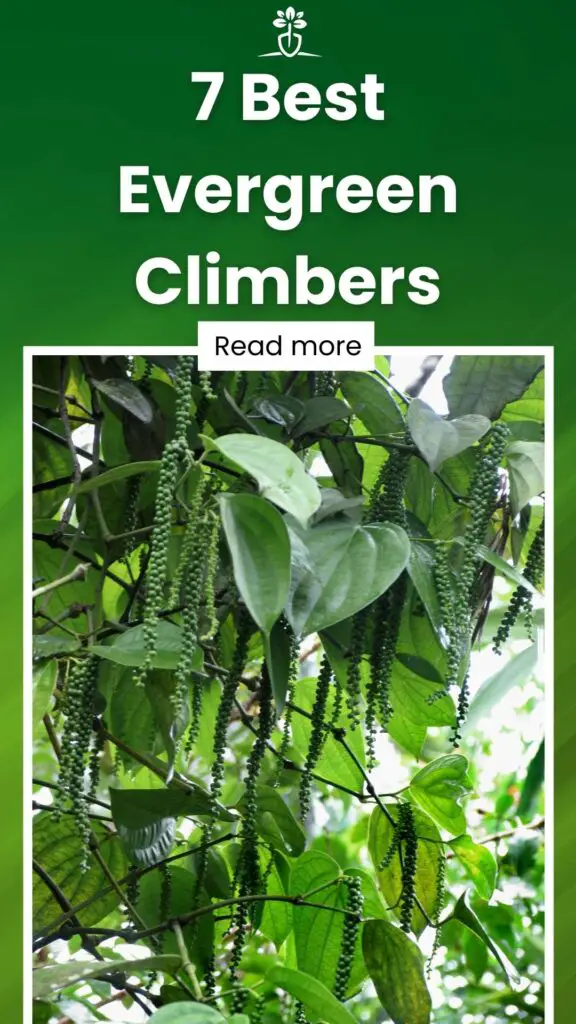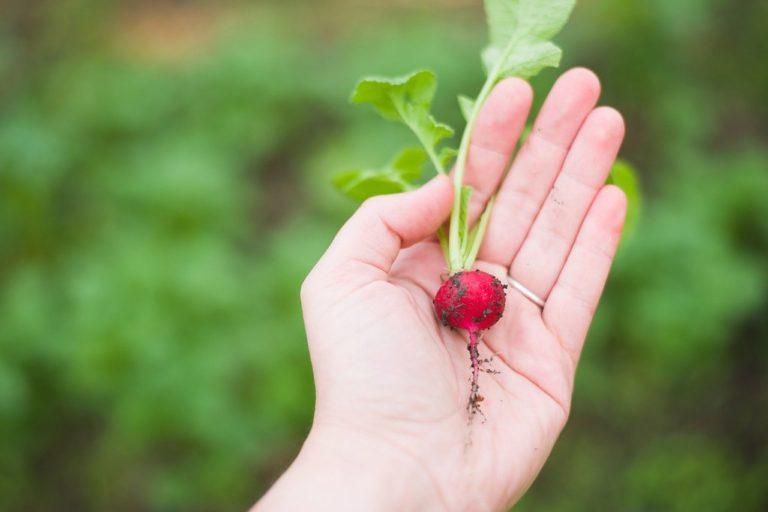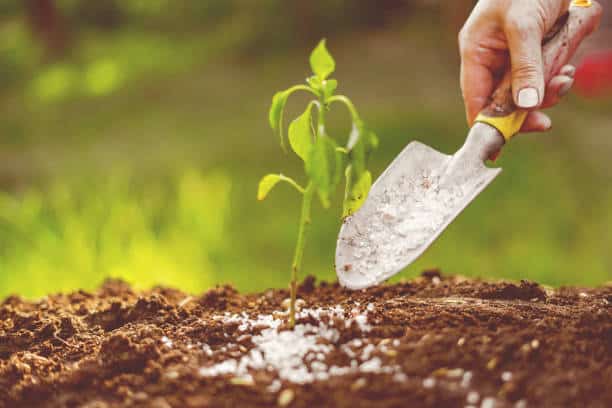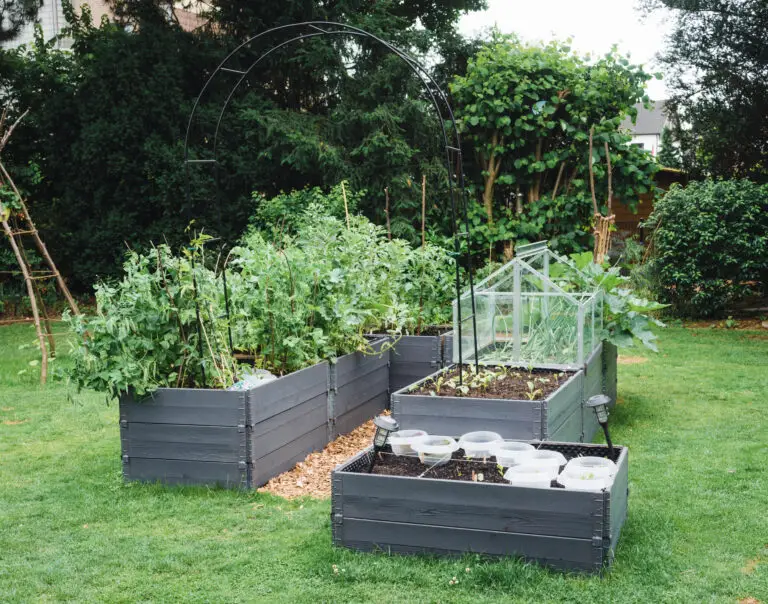7 Best Evergreen Climbers
Climbing plants are some of the most distinct plants you can find out there. Rather than coming from a tuber, or stem, or woody roots, these amazing plants grow up and around other plants and surfaces around them, making for some vibrant flower and plant arrangements, and a stunning garden that feels like a lush green grove.
For that wonderful green experience all year round, we have compiled a list of 7 evergreen climbers that will keep your garden looking beautiful all year round!
Contents
1. Blue Dawn Morning Glory

For a fast-growing climbing plant that’s perfect for areas with mild winter, it’s tough to go wrong with the blue dawn morning glory.
This beautiful plant changes its color depending on what time of day it is, starting as a bright blue in the morning, before going through deeper and darker shades throughout the day, before finishing as a deep pink. It’s a spectacle for anyone fortunate enough to see it unfold in front of them.
This climber grows in a way that makes it a perfect cover for a bank or slope that it is growing across. A perennial plant, this free-flowering plant grows best in the full sun.
Not only will this plant grow to 25 feet long, but it will reach that impressive length in an astonishingly little amount of time.
In fact, it grows so well, that some regions of the United States and Mexico consider it a pest or invasive species. Make sure that this isn’t the case if you are looking to grow this climber.
2. Five Leaf Akebia

For a hardy climber that will stay green all year round, you’ll want to take a look at the five-leaf akebia. Native to Japan and a wide range of the rest of East Asia, this plant has since become a very popular climbing plant to grow in the United States.
In the wild, this fragrant, almost chocolate-smelling plant can be found growing up the sides of trees, hills, streams, and even up the side of mountain slopes. This is a plant that just wants to go upwards!
This plant is a hardy specimen, able to grow in areas that are often very hot and dry for climbing plants, and in direct sunlight too.
Just make sure that it is well-watered, and that the soil drains well, and you’ll be growing this plant upwards in no time flat!
3. Cape Honeysuckle

For a shrub that clambers and scrambles upwards, you may want to take a look at the cape honeysuckle.
Growing in colors from honey-like orange to a deep red, this is a startling climbing plant that any garden would be lucky to have grown in it.
A native to the southern tip of Africa, this climbing flower is found in Mozambique, Eswatini, as well as South Africa. From there, it has been cultivated and grown in various pockets around the world.
When it comes to planting this climber for yourself, you have a few options open to you. You can either grow this plant with a little shading, or it can be grown in the full sun as well.
If you want fresh growth to keep appearing the following year, be sure to prune and cut back the old flowers towards the end of winter, in order to encourage them to grow back as the cold and frost leaves in early spring.
4. Evergreen Clematis

With its large almost leathery textured leaves and the huge bursts of bright white flowers that spring up across it, it’s hard to mistake the evergreen clematis for anything else.
The small, tightly packed clusters of evergreen clematis flowers are some of the most striking in the wider clematis family of plants.
Thanks to its evergreen nature, this clematis plant has plant growth all year round.
With flower blooms emerging midwinter, they add a dash of color to an otherwise dreary and sallow garden, making it very popular in places where that burst of white is welcome against a botanical sea of greens and browns.
Not only that, but the evergreen variety is one of the fastest-growing too, able to quickly reach lengths of up to 40 feet in some examples!
For this reason, if you are planning on letting this plant grow to its maximum length, you’ll need to give it appropriate support as it continues to grow.
5. Creeping Fig

From its thin brown vines to its dark green leaves, to the dense branches that sprout with incredible vigor once it is established, there’s a reason that the creeping fig earned its distinct name. That, and they have a knack for being able to stick and climb up any surface they choose.
Being a native of many countries in East Asia, the plant has since adapted to and become a mainstay of the South-Eastern States of the United States.
The fact that it can survive in temperatures as low as 34 degrees Fahrenheit helps it survive and thrive in locations that would be a death sentence to other plants.
Once it is established in a temperate climate, the plant requires very little attention to maintain, if any. However, this also means that it can easily grow out of control, becoming invasive to the local ecosystem, and damaging mortar and other building materials as it grows.
Be sure to keep an eye on it if you want to plant this beautiful climbing evergreen.
6. Pink Bower Vine

If you live in a subtropical place and are looking for a beautiful evergreen climber to add to your garden, then the pink bower is certainly a plant you should consider growing.
Also known as simply the bower Vine, this plant originally comes from the land down under in Australia.
This plant, unlike the creeping fig we just discussed, doesn’t tend to grow densely. Instead, its vines spread across the surface it is trying to climb, creating a beautiful blanket effect where it is grown, peppered with clusters of trumpet-shaped white and pink flowers.
Although this plant is somewhat drought resistant, if you want to grow this yourself, you should still water it on a regular basis. Just make sure that the last watering has been allowed to dry between top-ups.
7. Chilean Bellflower

With one of the most striking flowers in this guide, the Chilean Bellflower plant is a climber with a tropical look to its beautiful decorative flowers.
Also known as Lapageria, after the wife of Emperor Napoleon Bonaparte, Empress Josephine Lapagerie, this flowering climber is native to the temperate forest in the South West of Chile, the most striking part of this climbing evergreen are the six, almost waxy petals that grow to form it’s distinct, drooping bell shape that it is loved for.
This is certainly a plant that will make you the envy of every fervent gardener and botanist around you if you manage to successfully grow it, but you should only consider this if you live in a relatively warm area with plenty of humidity.
Although it can handle brief cold snaps, this is a plant that really does not handle cold well for more than a few days.
Conclusion
So, we’ve covered quite the range of climbers for you to consider for your own garden, from fast-growing tanglers to beautiful flowery species.
Most will require a fair amount of care and attention, but when they grow well, all of these climbing evergreens will bring a great, lush feeling of plant life to your garden.




